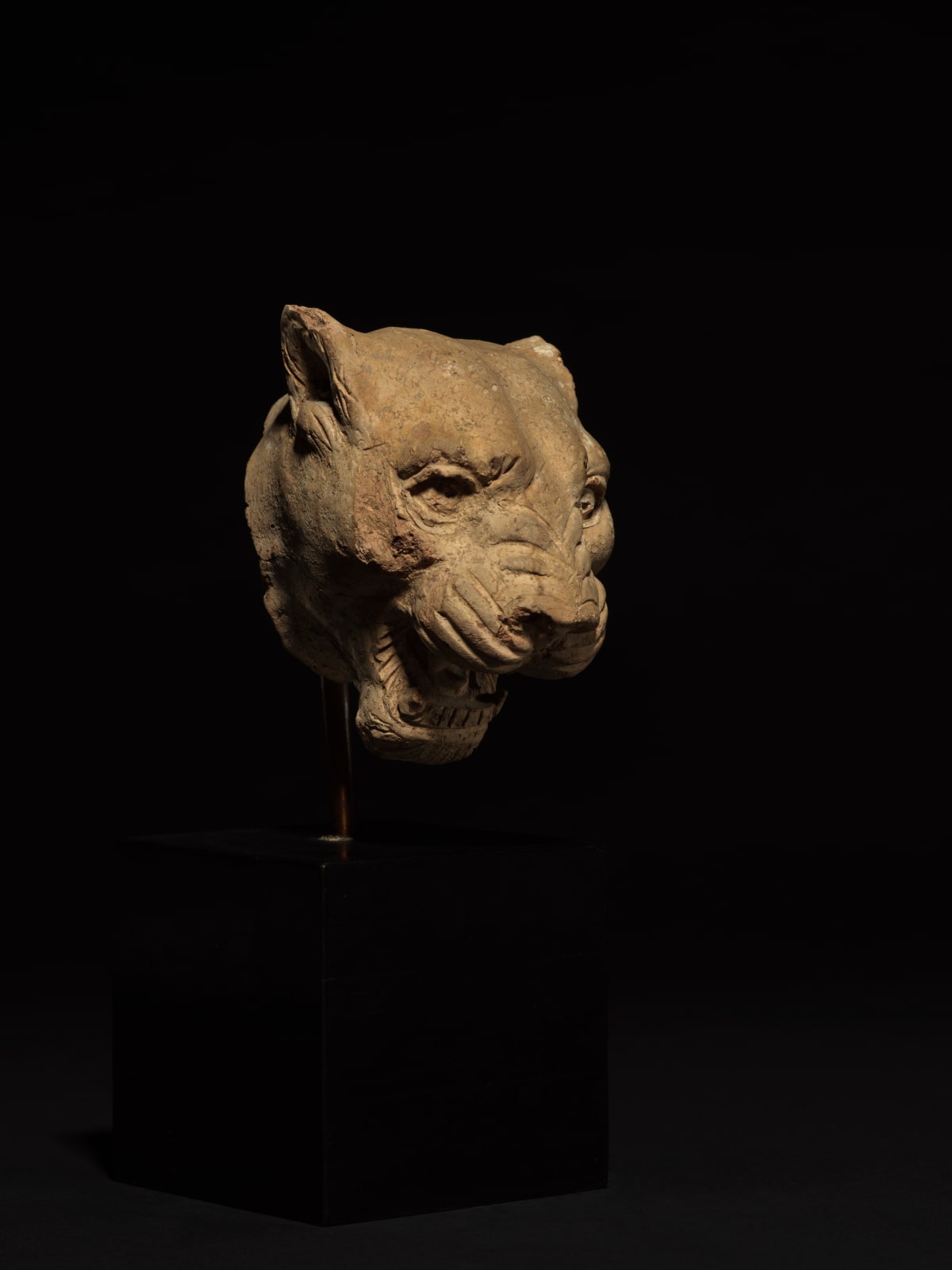




SOUTH ITALIAN GREEK
29.8 cm (11 ¾ in.) high, overall
Further images
This dramatic head of a panther has an important academic provenance. Its most arresting feature is the open mouth with teeth individually and prominently articulated. It is carefully modeled, with the eyes rendered with heavy lids and incised pupils. The whiskers and wrinkles of the snout are deliberately indicated, as are tufts of hair emanating from inside the ears. Another notable feature is the stippling of the surface especially evident on the forehead between the ears, done while the clay was still soft and evidently indicating the spots of the feline’s fur. These would have been accentuated with color in the original condition of the piece. There are scattered patches of a white slip or wash on the head, most noticeably at the top and sides, as well as within the proper left ear. Other pigments would have been added on top of this white layer. The overall freshness of the sculpture is due to the free working of the head while the molded but not yet fired clay was still malleable.
The hollow head has been filled with plaster at the back to facilitate its modern mounting. The open mouth reveals a hollow interior, suggesting that the head could conceivably have been a waterspout gargoyle. The use of terracotta lion heads as gargoyles is well attested in Magna Grecian architectural sculpture.
This large terracotta head was always considered by Otto Brendel, its previous owner and distinguished scholar of Roman and Etruscan art, to be an Etruscan work, but more recent scholarship has placed it within the coroplastic tradition of the South Italian Greek cities. The original purpose of the sculpture is still open to question. It is possible that the piece served as a votive or comes from an architectural setting such as a pediment or, as mentioned, a waterspout. The head may be compared to marble examples of Hellenistic and later creations.
Two notable Etruscologists, Dr Mario Iozzo, Director of the Florence Archaeological Museum, and Professor Richard De Puma, University of Iowa, Emeritus, and author of the recent comprehensive Etruscan volume of the Metropolitan Museum of Art (2013), were consulted regarding this piece, both of whom suggest that the sculpture might well be South Italian Greek rather than Etruscan.
Provenance
Collection of Mr. Robert Laurent (1890-1970), by 1956;sold to Dr. Otto J. Brendel, while both Laurent and Brendel taught at Indiana University, 1942-1956;
Collection of Dr. Otto J. Brendel;
By descent, Collection of Mrs. Cornelia Foss.




